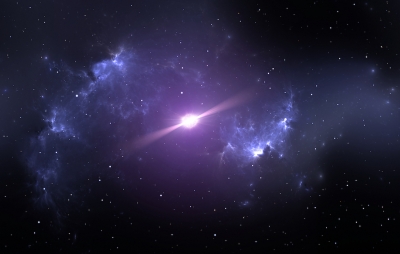
Neutron stars can rotate up to at least 60 times per second when born. If they are part of a binary system, they can increase this rotation rate through the accretion of material, to over 600 times per second!
Neutron stars pack their mass inside a 20-kilometer (12.4 miles) diameter. They are so dense that a single teaspoon would weigh a billion tons — assuming you somehow managed to snag a sample without being captured by the body’s strong gravitational pull. On average, gravity on a neutron star is 2 billion times stronger than gravity on Earth. In fact, it’s strong enough to significantly bend radiation from the star in a process known as gravitational lensing, allowing astronomers to see some of the back side of the star.
The power from the supernova that birthed it gives the star an extremely quick rotation, causing it to spin several times in a second. Neutron stars can spin as fast as 43,000 times per minute, gradually slowing over time.
If a neutron star is part of a binary system that survived the deadly blast from its supernova (or if it captured a passing companion), things can get even more interesting. If the second star is less massive than the sun, it pulls mass from its companion into a Roche lobe, a balloon-like cloud of material that orbits the neutron star. Companion stars up to 10 times the sun’s mass create similar mass transfers that are more unstable and don’t last as long.
Stars more than 10 times as massive as the sun transfer material in the form of stellar wind. The material flows along the magnetic poles of the neutron star, creating X-ray pulsations as it is heated.
By 2010, approximately 1,800 pulsars had been identified through radio detection, with another 70 found by gamma-rays. Some pulsars even have planets orbiting them — and some may turn into planets.
Credit : Space.com
Picture Credit : Google




